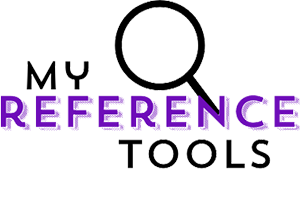Unlocking Professional Growth with Competency Based Education

Competency based education is rapidly shaping the landscape of lifelong learning. No longer confined to K-12 schools or university classrooms, this versatile approach is inspiring a fundamental shift in how organizations and professionals approach skill development, career advancement, and workforce readiness. For professionals across industries, understanding and leveraging competency based education can be the key to sustained growth, adaptability, and lasting success.
Understanding Competency Based Education
At its core, competency based education (CBE) emphasizes what learners know and can do, rather than how much time they’ve spent in a classroom or studying a particular subject. This model breaks learning objectives down into clearly defined, measurable competencies. Learners progress by demonstrating mastery of each competency, typically through real-world assessment or application, rather than logging hours or completing traditional coursework.
Key Features of CBE
- Mastery over seat time: Advancement occurs only after mastering each skill or knowledge area.
- Personalized pathways: Learners move at their own pace, often with the ability to revisit concepts or accelerate ahead based on prior knowledge.
- Authentic assessment: Demonstrations, portfolios, workplace projects, or simulations are common, reflecting on-the-job realities and demands.
- Transparency and relevance: Learners always know what is expected, and competencies align directly with industry needs.
For professionals eager to reskill, upskill, or keep pace with changing industries, CBE offers a flexible, relevant, and targeted approach that traditional education may struggle to match.
Why Competency Based Education Matters for Professionals
Addressing the Skills Gap
The market is evolving at lightning speed, fueled by technological innovation, globalization, and shifting consumer demands. Employers now prize adaptable, well-rounded employees who can demonstrate specific, up-to-date skills. However, studies consistently find a significant gap between the capabilities employees possess and those employers require.
Competency based education closes this gap, ensuring that learning programs map directly to the competencies employers are searching for. This targeted learning model equips professionals to:
- Build only the skills they need, often faster than through conventional means
- Provide tangible evidence of mastery to current or prospective employers
- Quickly adapt to new roles, responsibilities, or even entirely new industries
Professional Mobility and Advancement
For those seeking career advancement, CBE provides a way to showcase continuous learning and practical ability. Rather than presenting a static résumé or a list of completed courses, professionals can offer employers a portfolio of demonstrated competencies directly relevant to their desired role.
Competency based credentials, such as digital badges or micro-credentials, are increasingly recognized as trusted indicators of professional capability. These portable proofs of mastery often carry more weight than academic grades or course completion certificates.
Lifelong Learning and Adaptability
Gone are the days when a single degree set the trajectory for an entire professional life. Today’s professionals must continuously refresh or acquire new skills to remain relevant. CBE aligns with the lifelong learning mindset by supporting modular, bite-sized, and interest-driven learning journeys. This approach fits easily into the busy schedules of working adults and keeps learning focused on measurable outcomes.
How Does Competency Based Education Work for Professionals
The Learning Process
A typical competency based program for professionals starts by identifying the essential competencies needed for a specific job, career path, or industry sector. Each competency is clearly defined in behavioral and performance terms, for example:
- “Effectively manage cross-functional teams to deliver project milestones on time and within budget.”
- “Design and implement secure network architectures that comply with current industry regulations.”
Professionals can then pursue learning modules, resources, or experiences designed to build those competencies. Assessments may include:
- Work-based projects or case studies
- Simulations mirroring real workplace challenges
- Practitioner observations or peer reviews
- Digital portfolios or presentations
Progress is tracked, and only demonstrated mastery leads to credit or credentials. This rigorous, evidence-based approach means that employers can trust the competencies professionals say they have.
Flexibility and Modularization
One of the greatest advantages of CBE is its flexibility. Programs often allow learners to:
- Move at their own pace, prioritizing areas for immediate professional impact
- Skip familiar topics by testing out (recognizing prior learning and experience)
- Focus learning time on true skill gaps rather than rehashing known material
Modular CBE offerings also allow for stacking learning experiences and credentials. For instance, several micro-credentials in project management, leadership, and data analysis might stack into a broader professional certificate.
Delivery Formats
CBE for professionals can take many forms, including:
- Online or blended courses facilitated by universities, training providers, or professional organizations
- Corporate training modules embedded within employee development programs
- Vendor- or association-specific competency frameworks with guided learning paths
The rise of digital platforms means that learning, assessment, and credentialing can often be completed anytime, anywhere.
Real-World Applications of CBE in Professional Settings
Technology and IT
Due to rapid technology evolution, IT professionals must constantly update their skills. Tech giants and innovators frequently use CBE to certify talent for roles in cybersecurity, data science, software engineering, and cloud architecture. For example, Amazon Web Services offers competency-based certification, where learners progress by passing scenario-based exams and real-world problem-solving challenges.
Healthcare
Competency based education is integral to ongoing professional development for nurses, physicians, and allied health professionals. It ensures practitioners maintain current knowledge and meet regulatory requirements, all while improving patient care outcomes. Continuing professional development (CPD) programs, board certifications, and simulation-based learning leverage CBE models extensively.
Business and Leadership
Business schools and corporate leaders are integrating competency models to develop managerial, leadership, and communication skills. Assessment centers, in-basket exercises, and 360-degree reviews all serve as CBE tools to measure critical professional competencies.
Education and Training
Even those in the training sector benefit, using CBE to measure instructional design, e-learning development, coaching effectiveness, and more. Professional certification bodies now frequently embed CBE as part of ongoing teaching licenses or credentials.
Best Practices for Professionals Engaging with CBE
Set Clear Learning Goals
Start by clarifying your professional objectives. Which competencies will best support your career aspirations or job performance? Review role descriptions, industry competency frameworks, or consult with mentors and supervisors for guidance.
Choose Recognized Providers
Seek programs affiliated with reputable organizations, industry groups, or higher education institutions. Look for those whose assessments mirror actual workplace tasks and whose credentials are accepted in your field.
Document and Showcase Your Mastery
Maintain a robust digital portfolio of completed projects, assessments, and credentials. Modern professional social networks (like LinkedIn) allow you to display micro-credentials, digital badges, and certifications directly on your profile for employers to see.
Be Prepared for Self-Driven Learning
CBE puts responsibility on the learner. Time management, motivation, and regular reflection are critical. Take advantage of tools and communities provided by learning platforms, and consider forming or joining professional learning groups for accountability and support.
Leverage CBE within Your Organization
If your employer hasn’t yet adopted CBE, consider advocating for it as a solution to skills gaps or as a method for systematically developing talent. Pilot a micro-credentialing program or propose competency-based mentorship or peer review initiatives to foster growth and recognition.
The Future of Competency Based Education for Professionals
With increasing workforce mobility, globalization, and technological disruption, the demand for visible, portable, and credible proof of professional competence is growing. CBE is uniquely positioned to address these trends, enabling professionals to earn recognition for learning wherever and however it occurs.
Emerging trends include:
- Artificial intelligence in CBE assessment: Platforms are using AI to individualize learning, adapt challenges in real time, and predict mastery based on performance data.
- Micro-credentialing at scale: Professional development is trending toward mini-degrees and digital badges that stack and signal niche capabilities to employers.
- Integration with workforce analytics: Employers are beginning to align hiring, promotion, and employee development strategies with CBE frameworks, using deep analytics to match internal talent to shifting workforce needs.
- Global standardization: Efforts are underway to develop industry-wide competency frameworks, making it easier for professionals to transfer skills across organizations and even borders.
Takeaways
Competency based education empowers professionals to move beyond traditional, time-bound learning, focusing instead on real-world skills and mastery. This provides tangible advantages for both individuals and organizations, including accelerated career advancement, better alignment with workplace needs, and enhanced adaptability in a changing economy.
By engaging strategically with CBE, professionals can craft their own learning journeys, showcase mastery to employers, and secure a lifelong advantage in the modern labor market.
Start exploring CBE programs today, and take the next step in your professional evolution toward mastery, recognition, and growth.



